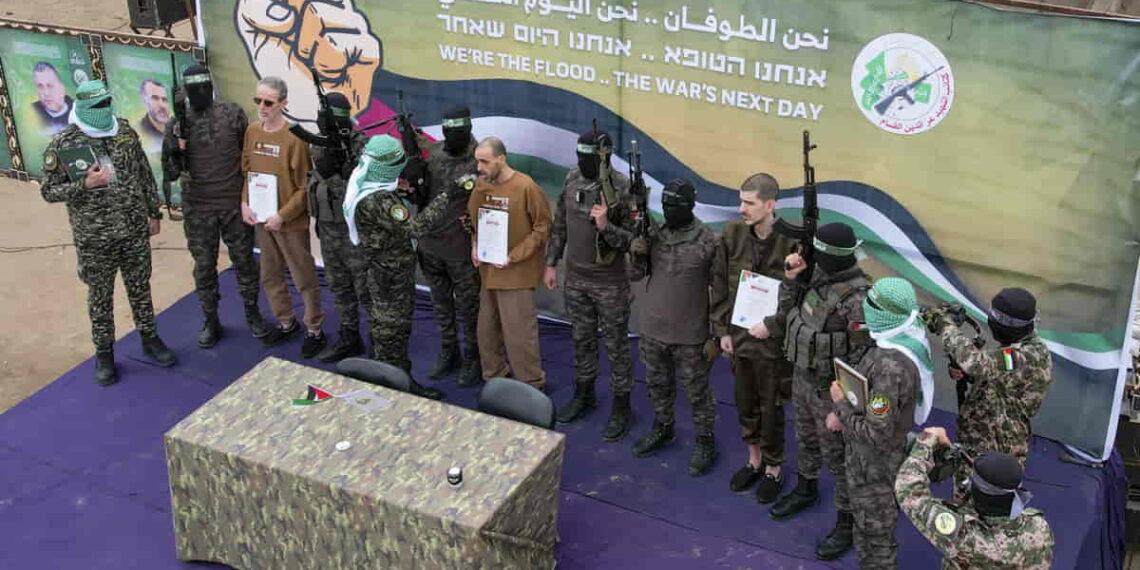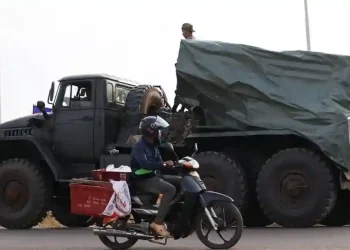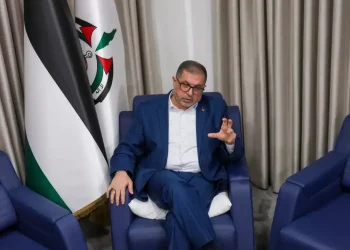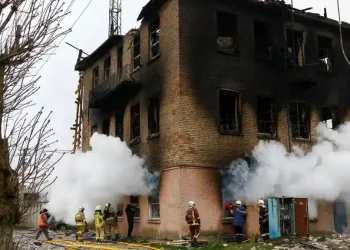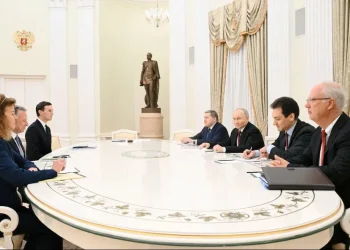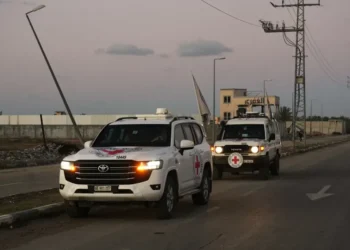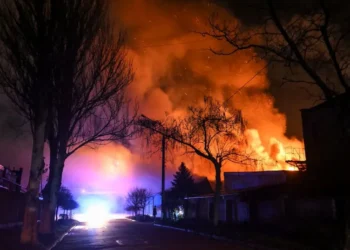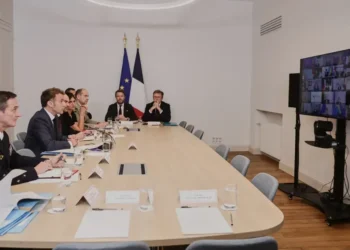Hamas Releases Three Israeli Hostages in Exchange for Palestinian Prisoners Amid Ceasefire
Hostage Release and Prisoner Exchange
In a significant yet tense development, Hamas released three Israeli hostages on Saturday as part of an ongoing ceasefire agreement. In return, Israel freed dozens of Palestinian prisoners. This marks the fifth such exchange since the truce began on January 19, 2025.
The three released Israeli hostages—Eli Sharabi (52), Ohad Ben Ami (56), and Or Levy (34)—were among approximately 250 people abducted during Hamas’ October 7, 2023, attack on Israel. However, their frail and emaciated appearance has sparked widespread concern and outrage in Israel.
Before being handed over to the International Committee of the Red Cross, the hostages were paraded before a large crowd by armed Hamas militants and forced to make public statements—a stark departure from previous releases where captives were not made to speak.
Concerns Over Hostages’ Condition
The visibly weakened state of the hostages has fueled anger in Israel. Prime Minister Benjamin Netanyahu’s office condemned the incident, stating, “We will not accept the shocking scenes.” However, no specific retaliatory measures were announced.
Opposition leader Yair Lapid argued that these distressing images underscored the need to extend the ceasefire and secure the release of dozens of remaining hostages.
In response to concerns about the hostages’ health, Hamas’ Qassam Brigades claimed they had “made efforts to preserve their lives despite the Israeli bombardment.”
Notably, many Palestinian prisoners released under the ceasefire have also appeared gaunt and frail, with some alleging mistreatment while in Israeli custody.
The Ongoing Ceasefire and Its Uncertain Future
The current phase of the ceasefire, set to last until early March, remains intact despite recent geopolitical tensions, including a controversial proposal by former U.S. President Donald Trump to relocate Palestinians out of Gaza. While Israel welcomed the idea, it was vehemently rejected by Palestinians and most of the international community.
The second phase of the ceasefire, which would involve Hamas releasing dozens more hostages in exchange for a lasting truce, remains uncertain. Some analysts believe Hamas may hesitate to free more captives—its primary bargaining tool—if it perceives serious threats of mass displacement.
Who Were the Hostages Released?
Each of the three released hostages has endured profound personal loss:
- Eli Sharabi was abducted from Kibbutz Be’eri, one of the worst-hit areas in the October 7 attack. His wife and two teenage daughters were killed, while his brother, Yossi, was also kidnapped but later died in captivity.
- Ohad Ben Ami, a father of three, was also taken from Kibbutz Be’eri. His wife, Raz, was released during the November 2023 ceasefire.
- Or Levy was kidnapped from the Nova music festival, where he had sought shelter in a safe room. His wife was killed during the attack, and his now 3-year-old son has been raised by relatives.
Relatives of the hostages cheered and cried as they watched live footage of their loved ones being released. Michael Levy, Or’s brother, described telling his nephew, “Mogi, we found daddy.”
Palestinian Prisoners Released by Israel
In exchange for the hostages, Israel freed 183 Palestinian prisoners, including:
- 18 serving life sentences for attacks on Israelis
- 54 serving long-term sentences
- 111 Gazans detained after October 7, many without trial
Among the released prisoners were several high-profile figures, including:
- Iyad Abu Shakhdam (49), imprisoned for nearly 21 years for his involvement in Hamas attacks, including the 2004 Beersheba suicide bombing that killed 16 Israelis, including a 4-year-old child.
- Jamal al-Tawil, a senior Hamas politician and former mayor of Al-Bireh, who has been repeatedly jailed for his role in militant activities.
The releases were met with celebrations in the West Bank, where crowds cheered as freed detainees arrived. One extremely frail-looking prisoner was immediately transferred into an ambulance for medical care.
The Road Ahead: War or Extended Truce?
The ceasefire’s second phase remains in question, with no clear sign that Israel and Hamas have begun negotiations.
- Israel remains committed to destroying Hamas, even though the group reasserted control over Gaza within hours of the ceasefire.
- A key far-right faction in Netanyahu’s coalition is pushing for the war to resume.
- Hamas insists it will not release additional hostages unless Israel ends the war and fully withdraws from Gaza.
The death toll continues to rise as both sides assess their next steps. Since the war began:
- 1,200 Israelis, mostly civilians, were killed in the October 7 attack.
- Over 47,000 Palestinians, more than half of them women and children, have died in Israel’s military response, according to Gaza’s Health Ministry.
- Israel claims to have killed over 17,000 Hamas fighters but has not provided concrete evidence.
With more than 70 hostages still in Gaza—including 34 believed dead—the coming weeks will determine whether fragile diplomacy holds or whether hostilities will resume.
This article was rewritten by JournosNews.com based on verified reporting from trusted sources. The content has been independently reviewed, fact-checked, and edited for accuracy, neutrality, tone, and global readability in accordance with Google News and AdSense standards.
All opinions, quotes, or statements from contributors, experts, or sourced organizations do not necessarily reflect the views of JournosNews.com. JournosNews.com maintains full editorial independence from any external funders, sponsors, or organizations.
Stay informed with JournosNews.com — your trusted source for verified global reporting and in-depth analysis. Follow us on Google News, BlueSky, and X for real-time updates.
